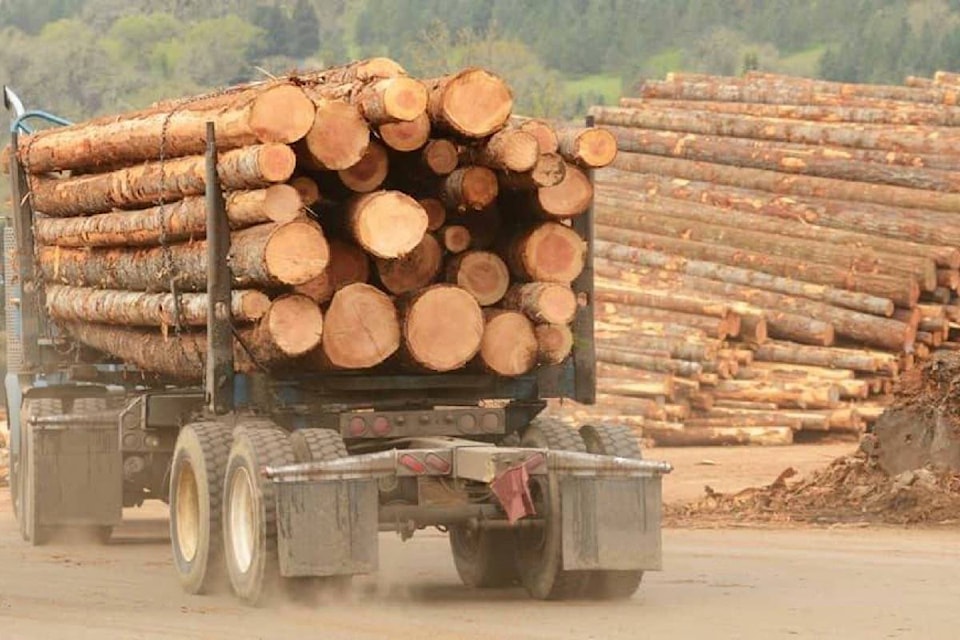Rates paid by companies to log Crown land increased July 1, with varied effects.
Referred to as stumpage rates, the fees are adjusted at the start of the fiscal quarter (Jan. 1, April 1, July 1 and Oct. 1) by the Ministry of Forests, Lands, Natural Resource Operations and Rural Development.
Various market variables and other calculations go into the adjustments. They also vary depending on the licensee.
“The largest impact on increased stumpage for July 1 was the bids on BC Timber Sales from the previous year,” as Steve Zika, CEO of Hampton Lumber, told Lakes District News.
The rate rise will cause log costs to increase for the next four months, he said.
“Companies have been trying to harvest additional volume in 2019 ahead of the stumpage increase if practical but there is no doubt that log costs will go up in the third quarter.”
The good news is that the stumpage rate hike isn’t expected to affect on Hampton’s operations in British Columbia.
“Recent increases in lumber prices will help offset these higher log prices so we have not changed our operating plans at Babine or Decker Lake at this time,” Zika explained.
For the operations of Tahtsa Timber, in Burns Lake, the stumpage fee hike hasn’t had a negative impact, but it has made business more difficult in some respects.
“We buy our wood from various parties like Comfor and BC Timber Sales. We also purchase from Canfor and some from Babine. We’re primarily purchasing the grade that is lower, that has a minimal stumpage fee,” said Stephen Burkholder, general manager of the Tahtsa Group.
“There’s always a small percentage of log that is actually good. In that small percentage with the stumapage increase it has impacted us,” he said.
The fee comes through even in the burned wood that Tahtsa receives, which has been left over following wildfires.
RELATED: Canfor, Babine mills take in burned timber
Most of the company’s product is cants in the 4x4 - 4x6 sizes that are shipped to China and Taiwan.
“The bottom line is this increase is impacting our ability to buy logs that we are able to use in our market right now. If there was no increase we could buy more. We’re the low grade user. That’s where it discourages full usage of that log because we have a limit to what we can pay for it,” said Burkholder.
“The delay of the stumpage fee compared to the market is unfortunately too big,” Burkholder added. “I don’t really know how it could be done better.”
That system delay has been touched on by John Rustad, Nechako Lakes MLA, who has warned of increased industry difficulties with the stumpage rate increase.
“There is a flaw in the stumpage system because there is a six month to one year delay in how prices work. So now we are seeing prices go up, due to high prices from last year where now prices have collapsed and stumpage is not reflecting it,” he said in June.
LOOK BACK: Stumpage costs to increase on July 1
LOOK BACK: Cut stumpage, keep people working, says Rustad
The MLA has advocated a reduction in the rate to help keep mills and contractors operating.
The Council of Forest Industries (COFI) acknowledged in an email to Lakes District News that higher stumpage fees are a challenge for the industry and raise operating costs in the province even higher.
But COFI added, echoing an earlier statement from Zika, that changing the stumpage fee is unrealistic.
“Unfortunately, the Market Pricing System underpins our trade case with the U.S. and as we are in the middle of the appeals process, adjusting this system at this time would be difficult.”
Blair McBride
Multimedia reporter
Send Blair an email
Like Lakes District News on Facebook
